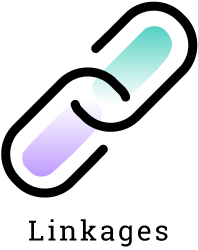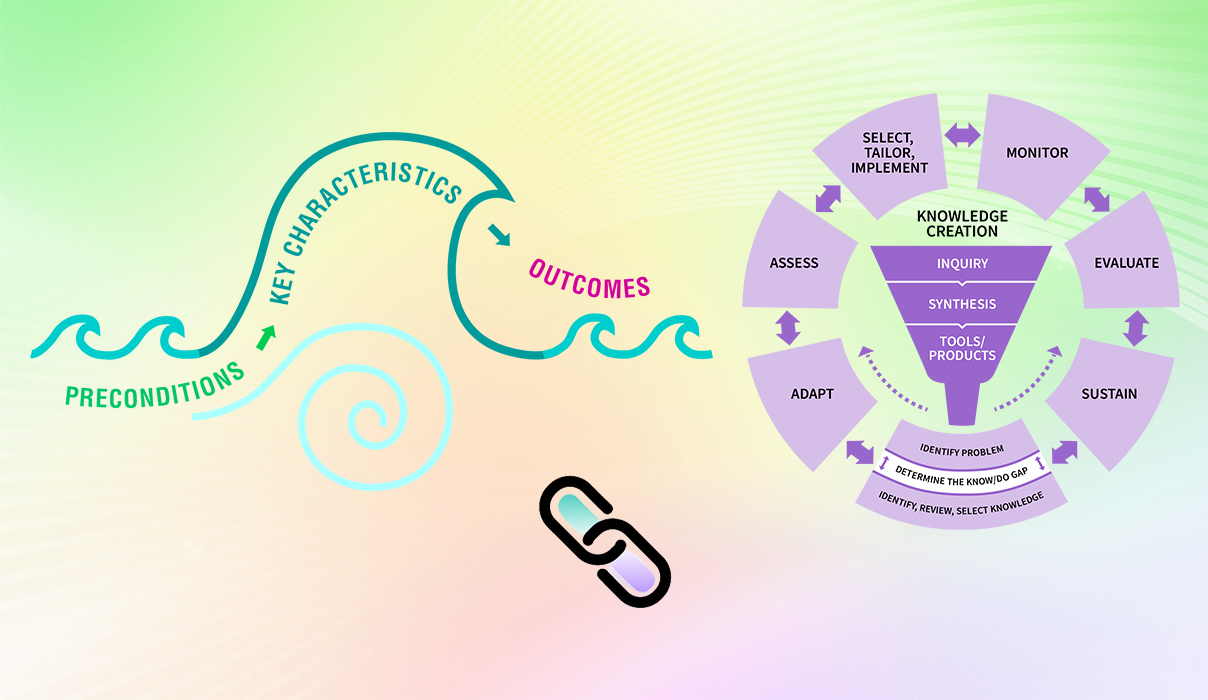Examples of social movement action are recognized
Index
As a precondition to using social movement actions, change agents must understand how powerful social movements have been in achieving transformation. In this section, you will learn about some examples of social movements that have led to innovation in health care and beyond.

What is this element?
Examples of successful social movements indicate their potential for driving change. By learning about social movement action and some of these examples, we can understand how they can be used to effect change (del Castillo et al., 2016; Grinspun, 2017b; Sustainable Improvement Team and the Horizons Team, 2018).
Social movements have occurred in the context of health care since the 1700s and continue to the present day. "Bottom-up" activists have sought and achieved gains such as: broadening access to services, expanding knowledge from those with lived experiences, advocating and advancing rights for groups of citizens, and implementing evidence into clinical practice (del Castillo et al., 2016; Dementia Action Alliance, 2009).
For example, since the 1980s, civil society agencies or community social groups such as the Alzheimer Society, Alcoholics Anonymous and the AIDS Committee have sought to represent themselves and their needs based on their own lived experiences and understanding. As agencies or groups outside of government or business sectors, civil society agencies have used social movement actions to connect groups of individuals and represent their needs and values (Dementia Action Alliance, 2009).
Why is this element important?
Individuals who have engaged in social movements have historically often had little to no hierarchical power. They also often lacked knowledge and experience of social movement thinking and actions, as well as access to resources. Nonetheless, their commitment and drive for a purpose shared by others have led to grassroots movements that have grown and have changed outcomes (del Castillo et al., 2016; Sustainable Improvement Team and the Horizons Team, 2018).
Examples of social movements and their outcomes show the power a group of committed individuals who are engaged in change - or a critical mass - can have when invested in a shared concern or strongly desired change and achieving goals. This can occur at several levels - the micro level (changes between individuals), meso level (changes at the organizational or community level) and/or macro level (changes at the system level, which often impact policies) (Bibby et al., 2009; Carson-Stevens et al., 2013; del Castillo et al., 2016; Embry & Grossman, 2006; Grinspun et al., 2018; Sustainable Improvement Team and the Horizons Team, 2018).
Social movements are powerful forces that have expanded, improved and advanced health-care services and outcomes to challenge inequities and change trajectories. Social movements have achieved many important victories that positively impact health-care services and outcomes. See some examples in the table below.
|
Issue underlying the social movement action |
Example(s) |
Description |
|
Addressing stigma and inequities for people with mental illnesses globally |
|
The Centre for Addiction and Mental Health, Canada’s largest mental health teaching hospital, is leading a movement to drive change in mental health services (Leading a Movement to Drive Change | CAMH) |
|
Advocating for rights for persons with disabilities |
|
|
|
Advocating for universal coverage of offloading devices |
Image |
#ActAgainstAmputation (Wounds Canada and RNAO - (woundscanada.ca) |
|
Increasing public awareness of illnesses, including linkages between social and environmental determinants of health |
|
Linking cancer with commercial tobacco led to a tobacco control movement; see, for example, History of tobacco control - Canadian Cancer Society |
|
Advancing patient safety and health improvement for everyone through the combined power of people and evidence |
|
|
|
Demanding expanded service provisions and care options for birth and for death and dying |
|
Regulated midwifery care – see more at The Re-emergence of Canadian Midwifery | Birth International), Hospice and palliative care – see, for example, A-History-of-Hospice-Palliative-Care.pdf (missionhospice.bc.ca) |
|
Creating person/patient-centred advocacy |
|
|
|
Pushing for increased access to drugs, including those publicly funded for communicable diseases |
|
The AIDS Coalition to Unleash Power (ACT UP) is a global grassroots movement fighting to end the AIDS pandemic. See more at ACT UP NY | End AIDS! |
|
Calling to action for an end to anti-Black racism for Black nurses |
|
RNAO’s Black Nurses Task Force Black lives still, and always will, matter – Black August and an update on RNAO’s Anti-Black Nursing Task Force | Doris' Covid-19 Blog |
|
Advancing prevention and screening for health-care options |
|
The breast cancer movement led to increased awareness of screening and access to routine mammograms – see, for example, #fightpink and Breast Cancer Society of Canada (charityintelligence.ca) |
SOURCES: Bibby et al., 2009; Campbell, 2020; del Castillo et al., 2016; Dementia Action Alliance, 2009; Elsey, 1998; Grinspun & Bajnok, 2018; Grinspun, et al; 2018a; Herechuk et al., 2010.

Accelerate your success: The Knowledge-to-Action Framework’s "Select, tailor, implement interventions" action cycle phase includes strategies to support a change initiative in the context of knowledge uptake and sustainability. As with the examples of social movements listed above, it is critical for change agents to intentionally choose and tailor individual and collective actions to the local context to have the greatest impact.
Having this knowledge can advance change teams’ goals by highlighting key strategies which can be particularly helpful in cases where there are limited resources.
Considerations for getting started
To start learning more about social movements, you and your change team can consider the following strategies:
- familiarize yourself with some of the examples of social movements linked to in this section to see how they have effectively advanced health and social services;
- learn how informal and formal leaders have used social movement actions to achieve change;
- recognize social movement approaches as valuable strategies that can re-energize your change initiative;
- gain knowledge of social movement components, including those described in the Social Movement Action (SMA) Framework; and
- understand the central role of a shared concern or strongly desired change and common goals as drivers for engaging people in social movements.
SOURCES: Bibby et al., 2009; del Castillo et al., 2016; Grinspun, D. et al 2018a; Dementia Action Alliance, 2009; Herechuk et al., 2010.
Case studies

Mobilizing communities for HIV prevention
Social movement strategies to engage and mobilize communities have been effective at reducing HIV transmission. Community-based interventions have made significant advancements in HIV prevention, including:
- decreasing discrimination against those who are HIV positive;
- raising the levels of HIV testing and counseling amongst young adults;
- improving access to program and service quality; and
- increasing the uptake of antiretroviral treatment to prevent transmission to non-infected partners.
Engaging and mobilizing communities – including members of stakeholder groups and civil society agencies – has been critical in taking collective action towards the goal of preventing HIV transmission. To be effective, communities were found to need the following three key components:
- empowerment through elements, such as leadership, resources, program management and the support of external partners
- development of having a collective or shared identity as a community
- capacity in health promotion, including the development of knowledge and skills, available resources, civic engagement, values for change and a learning culture

Applying grassroots advocacy for girls and women with disabilities and Deaf women
In 1985, 17 women with disabilities across Canada met in Ottawa to form what would become the Disabled Women’s Network (DAWN Canada), one of only a few similar networks globally. These women united in their commitment to creating a national cross-disability organization to advocate for the rights of all women with disabilities and Deaf women through a lens of feminist leadership.
DAWN Canada is a powerful example of an organization built by grassroots efforts and collective action. Its mission targets key areas of shared concern for women with disabilities including discrimination, poverty, unemployment and violence and the promotion of health equity and access to justice. To build support and public visibility, they applied grassroots actions and strategically partnered with other organizations who also advocated for the rights of women and persons with disabilities and the end of systemic marginalization, including labour unions. Researchers and academics joined the effort to promote a feminist disability lens as a standard of practice.
DAWN Canada remains an active and committed disability advocacy organization at all levels:
- at the micro level, they support women and girls with tools to build their self-determination and leadership
- at the community level, they improve programs to support the needs and rights of women and girls with disabilities and Deaf women
- at the macro level, they advocate for policy reform
Other examples of health social movements (videos) include:
Tell us how you and your change teams have used examples of social movements to build your knowledge and skills of grassroots action at #LeadingChangeToolkit
|
More than a pill: health as a social movement (RSA, 2017) |
|
|
Health as a Social Movement (Agile Ageing Alliance, 2016) |
Health as a Social Movement - Agile Ageing Alliance - YouTube |
|
How birth control changed the world (Bloomberg Quicktake, 2018) |
Linking this precondition to other framework components

Each of the elements of the Social Movement Action (SMA) Framework is dynamic and interrelated. For example, examples of social movements can be linked to the other two preconditions in the SMA Framework: "receptivity to change" and "change is valued and necessary". When a group of intrinsically-motivated and emerging leaders – change agents – are ready for change and share a common goal, they take individual and collective action to achieve that shared goal.
Linking to the action cycle phases of the Knowledge-to-Action Framework
You and your change team’s capacity in social movement actions may be enhanced or accelerated by the addition of some of the action cycle phases of the Knowledge-to-Action (KTA) Framework, as the two frameworks are complementary. In addition to the linking example described earlier in this section, there can be many other points of connection between the two frameworks. Here are three more examples:
- Identify the problem: Leaders of historical and current social movements identified a problem to address at the micro, meso or macro level. Understanding how a shared concern or a strongly desired change can allow you and your change team to visualize how an existing problem can lead to a social movement.
- Assess barriers and facilitators: To assess what worked and what did not work for social movements to succeed, you and your change team can think about the lessons learned in these social movement exemplars. Reviewing the lessons learned includes assessing the facilitators and barriers that helped or hindered the social movement’s success. These assessments may give you more insight into what to look out for in your local setting.
- Evaluate outcomes: Did the past or current social movements achieve their intended outcomes? Evaluating whether these social movement exemplars accomplished their goals can give the team a good idea of what worked for them and why. How did the facilitators and barriers in the course of the social movement contribute to the final outcome? This can give you and your team greater insight into whether your social movement can ultimately achieve its outcomes.
For more discussion about the dynamic links between the elements of the SMA Framework to one another and to the KTA Framework, see the section "Two complementary frameworks".
More resources
|
Name of resource |
Description |
|
Releasing energy for change in our communities. Social movements in health (Burbidge, 2017) |
A discussion paper on how communities can harness energy for change. |
|
Community Mobilization e-Tutorial (Community Leadership and Action Collaborative, undated) |
A one-hour tutorial on community mobilization that includes defining elements, the benefits of investing in community mobilization and what donors and policymakers need to know about community mobilization. |
